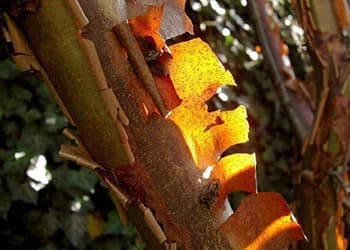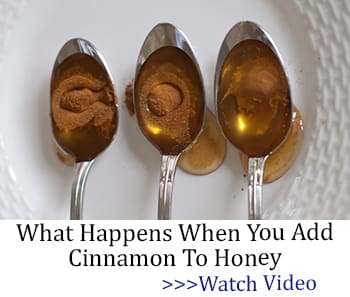Cinnamon may be one of those things that you associate only with a warm oatmeal breakfast, or perhaps a cinnamon bun in the mornings (or any time of day; let’s be real. Cinnamon buns rock!). However, this simple spice does a lot for us. It helps us control our blood sugar, it does light work on bad bugs in our digestive system, and it can absolutely kick butt in our gardens and potted plants. Yes, even the ones indoors. How? Let’s take a look at what cinnamon does when introduce to growing mediums.
Anti-Bacterial and Anti-Fungal Properties
Cinnamon is capable of a lot of things, but one of its primary uses historically has been healing plants. Those who are heavily attacked by bacteria or funguses may be able to be cured by sprinkling cinnamon heavily in their wounded areas. This encourages new growth and puts a stop to all the nasty gunk that’s killing the plant.
The bigger problem is if you allow the cinnamon to wash off a plant wound or an affected area. It does have to sit on it while it’s healing or you simply won’t get the good results that you’re hoping for.
To most effectively use cinnamon in situations like this, put a little plastic over your plant. Feel free to use Tegaderm if the area is very small (say a notch on a stem) and does not require access to air for the health of the plant. If it does, we recommend putting a little clear tarp over the plant, a couple of feet higher than the plant is tall, so as not to accidentally make a microwave. Make sure you water only the roots of affected plants to keep from rinsing them clean.
Keeping Away the Furry Foulers
Squirrels and other common garden pests hate a few things: mint, ground peppercorns, and cinnamon. Cinnamon gets in their noses, their faces, and stains their paws. It won’t clean off and they hate the taste of it. You may lose a few berries or fruits, still, until the squirrels learn that you’re at war, but after that? They’ll stay away.
To best ward off these furry foes, sprinkle a light dusting of cinnamon in the area you’d prefer these menaces didn’t bother you. Easy enough, right?
Well, it may take some time to fully take effect. However, this trick has been used for generations to ward squirrels (and chipmunks, and so forth) away from bird feeders, berry bushes, and the such. This does not work on birds since this is a scent-based thing and birds really don’t use their sense of smell very much. Plus, birds don’t seem to mind things like cinnamon and hot peppers because their receptors don’t work in the same manner that mammal receptors do.
Please note, if the squirrels in your area are in rare form and seem to prefer cinnamon (an extreme rarity that often suggests an issue with high blood glucose in the local squirrel population), try using a different type of cinnamon instead of abandoning it altogether.
Insects Hate It
Much like our furry not-friends mentioned up above, ants and other burrowing insects loathe cinnamon sprinkled around plants.
Now, of course, ants don’t usually pose a lot of threat to most of our vegetable and flower gardens. Fruits? Well, that’s an entirely different story. If you’re being overrun by ants because your fruits are just too delicious for them to say no to, and because they store up glucose for the eggs their queen is laying. Look up ant reproduction. If you have a heavy ant population, much like the squirrels craving cinnamon above, you have a sugary product somewhere on your property that they’re enjoying.
However, you can fix this issue with some cinnamon. Unlike squirrels, ants don’t try to manage their access to glucose like that. They’ll just stop coming through if you circle your plants with cinnamon.
If you have an ant problem, grab a few containers of cheap powdered cinnamon from your local grocery store. Make sure there’s no way that ants could work their way up a fence, post, or another plant to access the plants you wish to protect from above the cinnamon line. Draw a cinnamon circle around the bottom of the plant and allow it to mound up, a bit like you’d see in an old-timey war film ala sandbag barriers.
Re-draw this barrier when your heaviest rains wash it away. You’ll be stunned at how well it keeps ants off your plants!
Works Inside the House, Too!
Cinnamon isn’t just for outside use, either. If you’re experiencing the common issues of mold or mildew on indoor plants (most common in heavily humid climates because plants just can’t get dry), cinnamon can be a wonderful way to fix your issue.
Point blank, this is something I do with all of my indoor plants (and boy do I have a lot of those these days). When mixing my potting soil, I pour in a few pounds of cinnamon to start off with. I do it in my reptile vivariums, too. It stops mold and mildew dead for months, sometimes years, on end. How long it works really seems to depend on how much watering or misting the plant requires over time. Obviously, the cinnamon will slowly filter out or become inactive and the pot will require more.
Much like the outdoor plants, those house plants that are already potted and do not require repotting should have cinnamon sprinkled across the top layer of soil. If you can safely work it into the top 1/4″-1″ of soil (for those low-rooting house plants), you may decide to do that, too. This can provide longer-lasting protection than just sprinkling it on top.
There’s also the added bonus of getting a whiff of fresh cinnamon every time you add a little water to your house plant buddies, too.
Final Thoughts
If cinnamon does not work to clear your mildew or mold infestation, please have your home checked. Now and then, house plants will be a good source to tell you that you have a roof leak or a pipe issue before you realize it yourself simply by sprouting mold or mildew all over themselves. Just a little heads up.
Readers, how have you used cinnamon in your gardens, house plants, and so forth in the past? Was there a neat way that you use it that we didn’t cover? Want to let others know? Talk to us in the comments below and, as always, Happy Gardening!
You may also like:
This Is Why You Should Have Charcoal Around Your Property
If You See This Plant in Your Backyard, Burn It Immediately! (Video)
Easy DIY Garden Pest Killer You Can Make At Home










